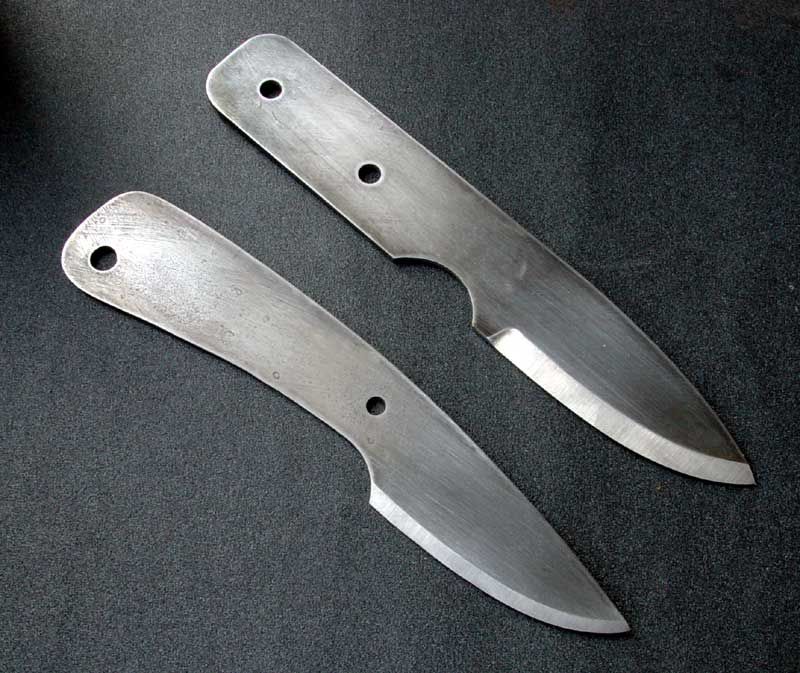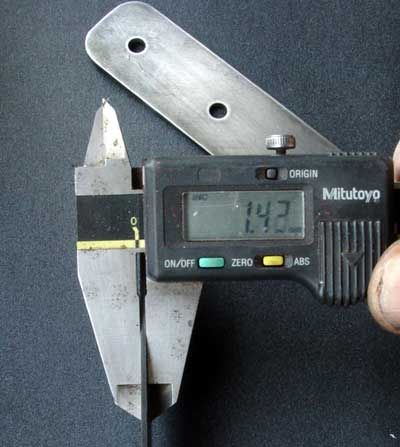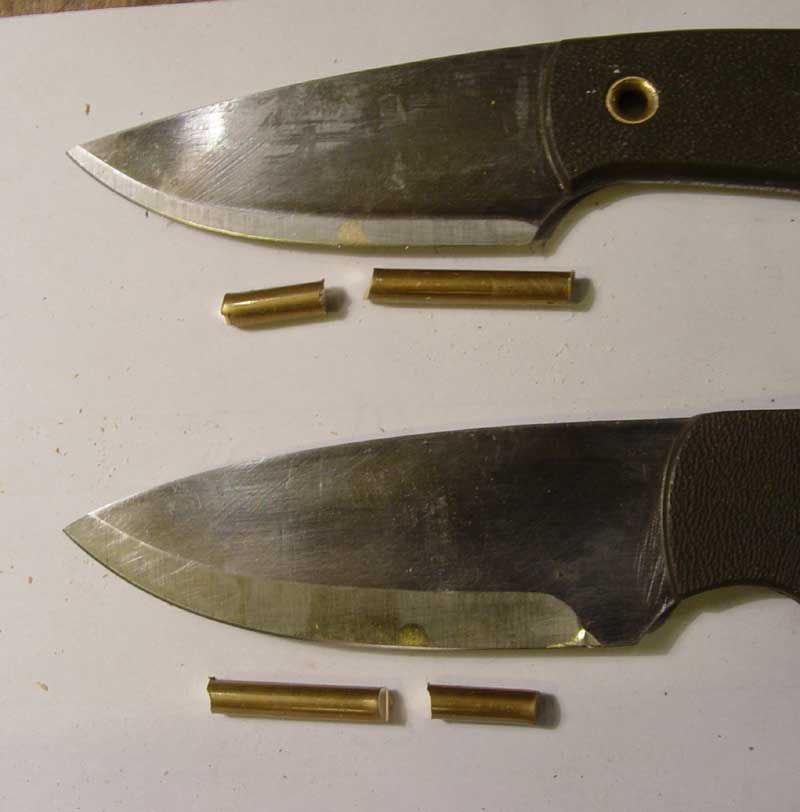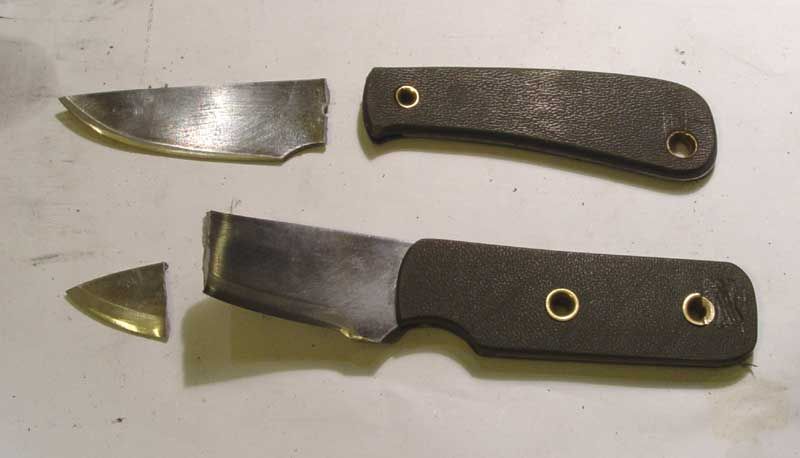Title says it All, I want your opinion on the grain size of a test piece.
Steel is 80crv2 - this is a new steel for me so some testing is in order.
I hardened a test piece and broke a section off after each step.
Top one is after 1x normalize
Middle one after 2x Normalizing
Botom one after hardening.
It was definitely hader to break a section off after hardening compared to the first step.

forgot to add : the photo is shot under 8x magnification.
Best regards
rolynd
Steel is 80crv2 - this is a new steel for me so some testing is in order.
I hardened a test piece and broke a section off after each step.
Top one is after 1x normalize
Middle one after 2x Normalizing
Botom one after hardening.
It was definitely hader to break a section off after hardening compared to the first step.

forgot to add : the photo is shot under 8x magnification.
Best regards
rolynd





